| 1 | Sahyadri hills whipsnake |
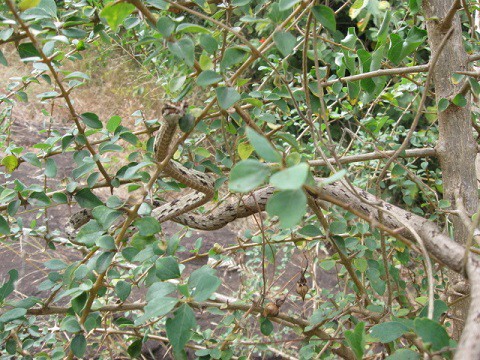
A bizarre Indian snake with keyholes for pupils and exceptional camouflage. While dozens of snakes mimic swinging vines or juicy green foliage, the Sahyadri hills whipsnake cleverly mimics a gnarly tree branch. They live exclusively in the western Ghats mountain range of India, in moist deciduous and evergreen forest, often near streams, well away from humanity. All this makes photographing them very difficult. They blend so perfectly that you could walk right past the Sahyadri hills whipsnake and miss them. If it’s an hour-long trail, consisting mainly of soaking evergreen forest, you’ll have no reason to guess they’re in that one particular spot.
Sahyadri hills whipsnakes prey mainly on lizards, and have a mild venom which has caused no known fatalities. They’re rear-fanged and must chew venom into an open wound repeatedly and laboriously. Until 2020, they were merely a subspecies of the brown-speckled whipsnake, before being granted independence.
If you finally find this snake, you should succeed, as they aren’t especially twitchy or nervous. Ahaetulla sahyadrensis won’t flee if you’re a few metres away. If anything, their camouflage is so superb that it’s hard to make them distinct within the picture. Of course, if they stray to greener, juicier foliage, their camouflage will be completely busted. That’s assuming that your camera doesn’t run out of charge, or you don’t start hearing tiger growls from the bushes.
| 2 | Amazon coral snake |
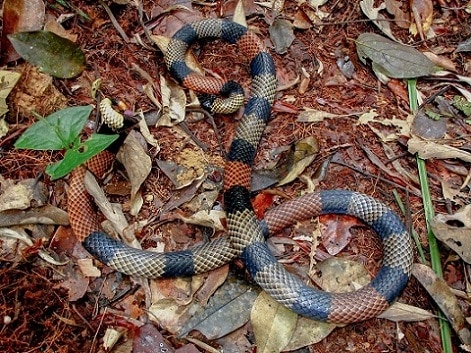
One of South America’s most common yet rarely seen coral snakes, due to the endless sea of rainforest it inhabits. There’s a huge contrast between this species’ large empire and the small amount of photos taken. Amazon coral snakes (Micrurus spixii) measure up to 160cm, and have the usual neurotoxic venom of their kind.
If you wish to photograph Micrurus spixii, you first have to find the location. That reads: Amazon rainforest. It’s impossible to know where to start, and from your first step into the suffocating jungle, a hundred pairs of crocodile, viper and arrowfrog eyes will swivel towards you, instantly alerted to the intruder. You might stumble into a river and drop your camera, not realising until 6 hours later, until your camera is already halfway down the Amazon river towards the Atlantic ocean.
If you find a coral snake, your problems double. Within the Micrurus family, Micrurus spixii is tricky to distinguish. It has yellow-black-red bands like dozens of its clan. There’s a high probability of snapping a hard-earned photo, and finding out it’s a completely different coral snake once you get home, perhaps after showing it to a chuckling university professor friend.
| 3 | Broad-head ground snake |
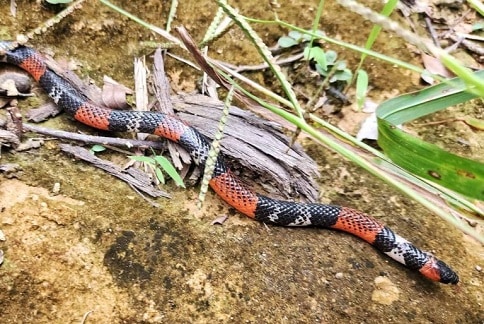
A semi-fossorial snake which maxes out at just 50-60cm, and belongs to Atractus, the world’s largest snake genus, at 141 members. Atractus latifrons occupies a swathe of western South America, from Brazil to Ecuador. Its territory spans thousands of square miles, yet Atractus latifrons is encountered rarely by citizens going about their daily lives. To a western reptile enthusiast seeking an HD photograph, the task is even harder.
Atractus latifrons is a diehard burrower, burying its entire body beneath leaf litter, or the decaying forest mulch of 15 seasons. Atractus latifrons feeds on earthworms mainly, and has a small gape size of its mouth, as sucking these slimy creatures down is perfectly easy. With no venom, nor vicious bite (they barely have teeth), the motivation is high to stick to soil where nobody can see them.
If you find the broadhead ground snake, it’s more likely to be luck, unless you’re a supreme reptile hunter grand don who can find them through sheer instinct. If there’s one photography tip, it’s to wait for heavy rains. These draw their earthworm prey to the surface, and hence Atractus latifrons too.
| 4 | African bush viper |
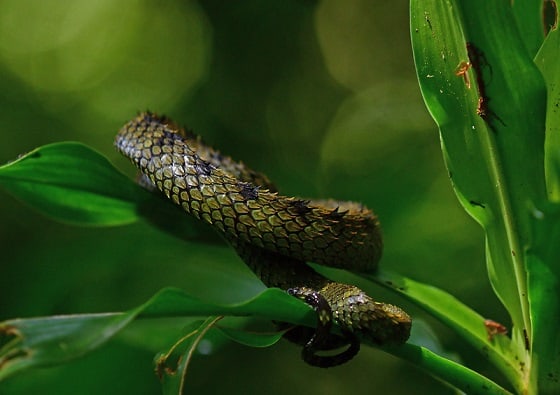
This venomous species regularly makes internet lists of the most bizarre snakes, due to its savagely keeled, pineapple-like scales. Yet this is a challenging snake to photograph, for a variety of reasons. Firstly, its camouflage is immense. Atheris hispida blends perfectly into the Rwandan or Ugandan jungles they call home.
Similarly to Amazon coral snakes, Atheris hispida is widespread in African forests, yet disproportionately few photographs exist. Anyone can snap a photo of a cape cobra from their car in Cape Town, but venturing into a jungle, machete in hand, is an entirely different proposition.
African bush vipers are highly likely to strike your chest, shoulders and arms, given that they prefer branches 1-2 metres high. This snake can easily awaken an overeager western photographer to the raw power of nature’s deadly creatures. You might start the day hoping for the perfect photo, and end it hoping to survive. The venom of Atheris hispida is poorly researched, but is said to be unusually neurotoxic for a viper.
| 5 | Darevskii’s viper |
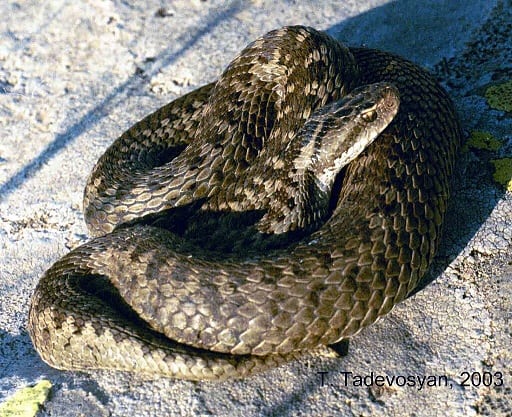
Within the Vipera family of true vipers, there’s massive variation. The all-powerful adder roams from Mongolia to the United Kingdom, while Darevskii’s vipers are limited to rugged mountains on the border regions of Georgia, Turkey and Armenia, at altitudes of over 2000 metres. We know a little about Vipera darevskii – that much of its diet comes from mammals and lizards, including the European snow vole. Its venom is relatively mild, and bites are rarely fatal. But actually finding these snakes is extremely difficult.
Darevskii’s vipers are rare to start with, but combined with their grey scales that blend perfectly with rock fields, and small size of 40cm, photographing one is a great accomplishment. You could be scraping around on your hands and knees for hours, not realising that you’re in the wrong location. Alternatively, Darevskii’s viper could be lurking in a comfortable rock crevice, unwilling to show itself.
The one advantage for a photographer is that Vipera darevskii is relatively lazy. They’re an ambush predator, and not prone to dashing away. But then you have fear to factor in. If you’re kneeling, eye squinting into camera, then you hear a piercing hiss and witness warning lunges, you’ll have to back off fast, unless you’re a maniac photographer who lives for these moments. They do live in stunning mountainsides with great views, so there’ll be compensation when you fail, as at least you’ll have something to photograph.
| 6 | Short ground snake |
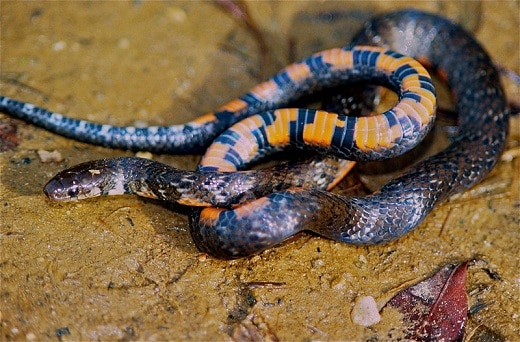
A harmless forest species ranging from Ecuador to Brazil to French Guiana, which travels along the ground and into small stream and pools. Short ground snakes eat earthworms and small frogs, and are recognisable by their glistening blue-black scales contrasting sharply against orange. Again, Erythrolamprus breviceps has a huge west-east span, but disproportionately few photos.
Firstly, this is a snake of rainforests, rice fields next door to rainforests, and clearings along large rainforest rivers. The biggest problem for a keen photographer is their tendency to dart away when spooked. Short ground snakes can’t fight off a predator, as they lack venom or vicious, tearing fangs. What they do have is the tangled wall of rainforest, and they exploit this by instantly vanishing into the undergrowth, the second their minimum danger threshold is exceeded. A photographer could hunch over, flash his camera, and think he’s got the perfect shot. When he looks up, the short ground snake is gone, like it was never there.
Photographing this snake is like untangling wires; fiddly and annoying, though satisfying when you finally accomplish it. At 50-80cm, short ground snakes aren’t a large target either. Consider yourself if not a master, then a higher apprentice if you photograph this snake.
| 7 | Banded flying snake |
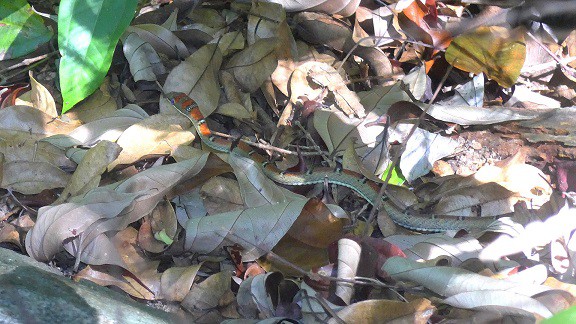
Part of the 5 member Chrysopelea flying snake group. This species measures 60cm, and primarily inhabits Singapore and Indonesia. It all seems so easy at first. Chrysopelea pelias can be found sitting on tree branches 5-10 metres high, gazing at their surroundings calmly, often near villages. It’s the perfect chance to flash a photograph, but unfortunately, Chrysopelea pelias has other plans.
Their entire hunting strategy revolves around leaping from tree branches with a millisecond’s notice. They then glide through the air, aiming at geckos they’ve spotted on branches 10 metres away with their orb-like eyes, or grab geckos on the ground, using momentum like a plane hitting a runway. Either way, the photographer is still standing there, looking dumbfounded. A promising opportunity is gone, and if he managed to flash a photo of one flying through mid-air, he might as well retire.
The easiest time to photograph Chrysopelea peliasis is while on the ground, but beware. This is when their nervous, twitchy speed comes into play. Banded flying snakes can ascend spindly branches so thin it’s like they’re breaking the laws of physics. Their neighbour the Indochinese spitting cobra is far easier to photograph, if you can hold your nerve.
| 8 | March’s palm pitviper |
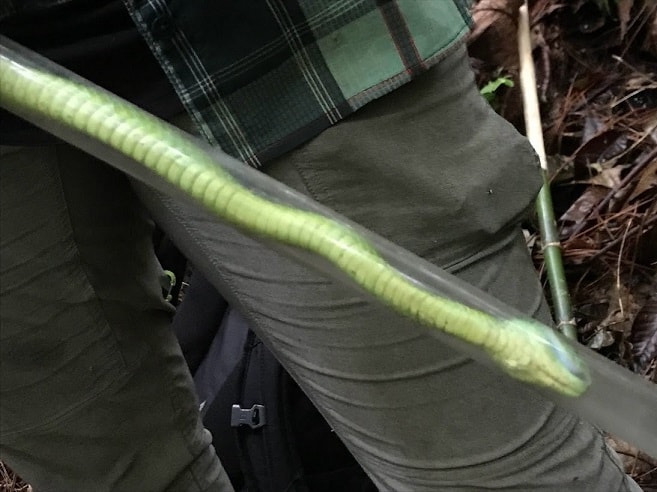
This snake is incredibly hard to photograph, mainly because of the extreme heights it climbs to. At 25 metres, this holds one of the records for branch height perch among Central American snakes. A 2022 study found that the average alone was 17.04 metres, March’s palm pitvipers aren’t in a hurry either. They can lurk in the upper canopies for weeks and weeks, in patient ambush posture, awaiting mammals like Mexican deer mice.
The next card they play is camouflage. March’s palm pitvipers are severely green, just like their rainforest sanctuaries are cloaked in green. If you’re standing right below Bothriechis marchi, swinging your camera around in frustration, you might still not notice them. They could drip a drop of corrosive venom on your head and still avoid becoming a photograph.
The best bet is when they stray to the ground, every so often, and cross open soil, or maybe a fallen log across a small stream. If you conclusively find one, March’s palm pitvipers are easy to snap a photo of, as they’re relatively slow. This species measures 80cm, and lives only in Honduras, particularly Casuco National Park in the northwest.
| 9 | Ijima’s sea snake |
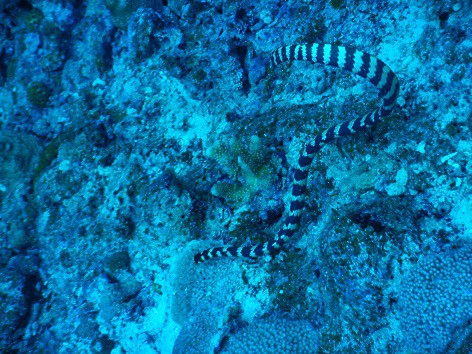
As a group, sea snakes have relatively few photos, mainly because it’s tricky to scuba dive in a wetsuit, search for snakes, and operate a waterproof camera all at once. The Hydrophis family has 36 members, and a good chunk have no legally useable pictures, except for faded old specimens in museum jaws.
One tricky species to photograph is Ijima’s sea snake (Emydocephalus ijimae). This is a northerly sea snake, inhabiting Taiwan and Japan’s southerly Ryukyu islands. A particular hotspot is Taiwan’s Orchid island. Emydocephalus ijimae almost never attacks humans and mainly preys on fish eggs, scooped up from coral reef crevices. Herein lies the problem. While elegant sea snakes at least swim around open sandy bottoms, and black-banded sea kraits rest in tidal caves, Emydocephalus ijimae is permanently hidden in an exploding galaxy of colour.
Coral reefs are so busy that it’s a nightmare to find Ijima’s sea snake in them, let alone fumble around with your camera and flash a photograph. Then there’s the crevices and coral ravines they lurk in. Photographing this sea snake is a tricky, though not impossible task. Ijima’s sea snake avoids sharks in these hideaways as well, although they might be vulnerable to sea anemones, stationary creatures related to corals that look like mushrooms, which seize fish with tentacles and thrust them into a hungry core.
| 10 | Oenpelli python |
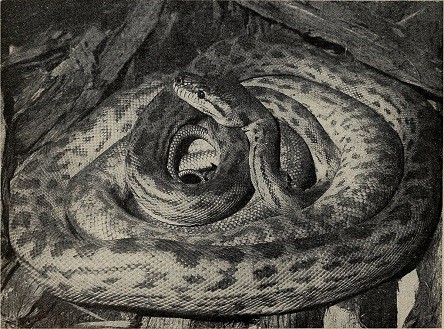
The Australian outback is a wasteland covering thousands of miles, often with nothing but orange soil and tiny green highway signs. The northern realms host one of Earth’s rarest constrictors, the Oenpelli python. This thin-bodied python was estimated to number below 10,000 in 2008.
Oenpelli pythons lurk in deep soil tunnels and dried out crevices. Even scientists struggle to find them, and quality photographs are few and far between. The problem is that literally anywhere on the expansive dusty surface could host them, so where do you start? It’s the opposite problem to Amazon coral snakes and their endless rainforest vistas.
Oenpelli pythons are theorised to prey on small wallabies and kangaroos. At regular lengths of 4 metres, and rumours of 5 metres, they’re the seventh longest snake on Earth, yet this hasn’t made them easier to capture in photo form. This is the hardest of the top 20 to photograph, and a massive challenge for any reptile enthusiast who thinks he’s conquered everything. In hours of trudging around the outback, you can’t squint your eye into a camera the whole time. If you do find an Oenpelli python poking its head from a dark tunnel, you’ll have to sort your equipment out. By then, it could have reversed into its underground outback lair again.
